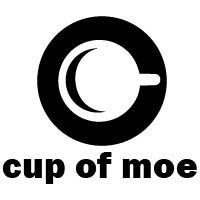We may earn money or products from the companies mentioned in this post.
Although Stephen King once criticized the film adaptation of “The Shining,” he later offered his praises. Much of this is due to the transformative nature of the film and Kubrick’s use of King’s novel as the foundation for his otherwise unique creation.
“The Shining,” chronicles the Torrance family, Jack (Jack Nicholson), Wendy (Shelley Duvall), and Danny (Danny Lloyd) during their stay at the Overlook Hotel in the Colorado Mountains. Jack, a struggling writer, has accepted the position as winter caretaker during the offseason. Audiences know the family is doomed from the opening credits which feature composer Wendy Carlos’ ominous, methodic synth riffs. If this isn’t clear enough, Danny foretells the nightmarish venture with one of his many hallucinations in an opening scene.
Notably absent are Jack and Wendy’s lengthy backstories. Illustrating their characters is admittedly more difficult in a ttwo-hourmovie than in a cinderblock-sized book. Kubrick instead included select details (Jack’s alcoholism, hurting Danny as a child) to paint a picture. They don’t compare to the encyclopedia King provides, but viewers have a clear lens through which to interpret Jack’s increasingly sporadic behavior and Danny’s visions.
This humanizing element lends “The Shining” its frightening quality. Jack is a struggling writer and alcoholic, snowed in for several months with his wife and young son. As the film progresses he slowly unravels through a series of seemingly-normal events. He sleeps in late, sequesters himself at his typewriter, and becomes radically unpredictable. In one scene he stares into space, giving the classic “Kubrick Stare,” and a few shots later admonishes his wife for disturbing his writing. Sure, he also talks to Lloyd, the imaginary bartender, but then again who doesn’t? And if Jack’s erratic behavior isn’t enough, Jack Nicholson’s violently fluctuating eyebrows add an alarmingly deranged look to an already talented actor.
What sets Kubrick’s “The Shining” apart from other horror films as well as other Stephen King screen adaptations is the remarkably grounded plot. The isolated Torrance family wanders about the gargantuan hotel, which despite its immensity offers a feeling of claustrophobia. Kubrick tones down the supernatural aspects present in King’s novel. The majority of the film could be interpreted as hallucinations rather than spirits. This subtlety establishes an element of reality within the unknown while compensating for the characters’ missing backstories.
As fantastic as “The Shining” presents itself, the finale stumbles. Kubrick includes significant dialogue and some specific details throughout the movie. A few of these were just plain confusing. Without having read the novel the bear suit, skeletons in the ballroom, and blood bursting from the elevator don’t make much sense. The general idea of the Overlook as a living entity is present, but you’ll understand better if you’ve read the novel. Nevertheless “The Shining,” relates the original story surprisingly well in a short period of time and is visually stunning. Doctor Sleep gives the perfect excuse to re-watch, or watch, “The Shining,” though viewing this tour de force never requires justification.
This post may contain affiliate links. We are a participant in affiliate programs such as the Amazon Services LLC Associates Program, an affiliate advertising program designed to provide a means for us to earn fees by linking to Amazon.com and affiliated sites. However, all products are thoroughly tested and reviews are honest and unbiased.

